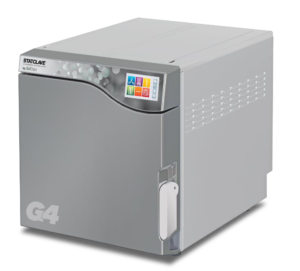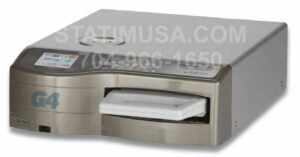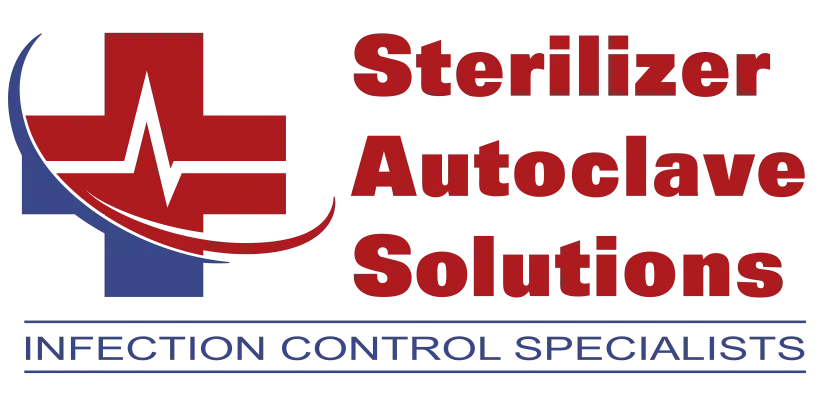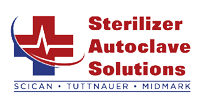Scican’s Speed Saves Time and Money Leave a comment
We’ve always been told that time is money about any job, and time in hospitals is definitely no exception. If you’ve ever seen a hospital bill, then you’ll definitely understand. Most of the things on the bill that you’re charged for in a visit will happen in the operating room. Meaning that you can infer the O.R. would be the part of the hospital that generates the most revenue.
It’s been shown that just 60 seconds in a hospital operating room can be valued at up to $62. Hospitals can charge by 15-60 minute segments, or even by the minute. They set a time window in which they believe the procedure to be completed, then charge by the minutes after should the surgeon exceed that time. Some facilities even have a policy of rounding 15 minutes up from their time of procedure completion.
Of course most of these calculations are usually cost-coverage for things in the room, such as:
- Basic procedure equipment (OR table, surgical set, etc.),
- Disposables,
- A circulating nurse, and a scrub tech or nurse, (not the wages/salary of surgeons who are often paid on a “per-procedure” basis)
- Blood products,
- Medications,
- Inflation
- Etc.
But some financial acclimations don’t count for some outside variables during the operation. Things like longer time limits of patients under anesthesia. Which can have its own costly side effects and potentially increase complication risk by the minute. Surgical smoke exposure, which contain toxic gasses and can cause negative reactions in surgeons or clinicians. Or even wasted or misused time via opportunity cost.
So if safety and time is the key to get a procedure well-done on time, what would be a good way to go about it? You should look through the entire process including staff, materials, and especially equipment. Proper and well maintained equipment can make all the difference in the world when trying to properly complete any task. That is certainly tantamount in a medical setting where multiple items are used many times each throughout the day. With all the instruments needing to be not only cleaned but sanitized in an efficient and timely matter. Most instruments need to be autoclaved multiple times a day which can be quite a busy and time consuming effort. But don’t worry because if you want to save time, and money while not compromising the safety of both patient and surgeon, we just might have a solution. And if you just want to talk to someone, call our Free Tech Support at 704-966-1650 Option 3.
The Speed of SciCan
If it’s speed you want, then SciCan has you covered. However efficiency is just as important. SciCan’s fastest machines, the StatClave G4 and the Statim G4 2000 units pair reliability and accessibility. With their G4 technology, getting fast cycles and the best results have never been easier. These autoclaves can make sure that you can get your operating tools RIGHT when you need them. Their integrated ease-of-access touch screen and easy navigated menus make for quick cycles with no hassle. No more wasted time that could lead to medical or financial risks for anyone.
The StatClave G4
The StatClave G4 is SciCan’s sleek, modern, gentle giant tabletop autoclave capable of handling anything you throw at it. Some autoclaves can take up to 60-90 minutes to complete a cycle. And in conditions of an operating room scenario, there’s too much risk involved to keep that timer going. So the StatClave G4 boasts sterilization times of only 38 minutes, with full closed door drying. And with it’s fresh water cycle gently and thoroughly cleaning your instruments, they’ll be clean and dry the second you open that door.
conditions of an operating room scenario, there’s too much risk involved to keep that timer going. So the StatClave G4 boasts sterilization times of only 38 minutes, with full closed door drying. And with it’s fresh water cycle gently and thoroughly cleaning your instruments, they’ll be clean and dry the second you open that door.
It utilizes the Class B pre/post vacuum sterilization more efficient than your standard autoclave before it. This means that the vacuum system removes 99% of the air inside the chamber before the temperature and pressure fully rise. This method allows for the sterilization of practically any load type. Especially the usually hard-to-reach areas on more porous materials and/or instruments. And it can hold up to 20 pouches worth of said porous instruments, or anything else you need. As well as 4 full-size cassettes and 4 exam cassettes.
Let’s not forget that G4 technology it provides. Both the StatClave and Statim 2000 now utilize this incredible tech. The G4 technology connects you to your machine, letting you know what’s going on. Just like any modern device, the G4 tech makes the StatClave WiFi compatible. This technological advantage provides a huge time-saver for employees. The wireless configuration to any of your smart devices let you know when your sterilizer is ready and the results that follow. That even includes things like instructions and maintenance notifications at your fingertips.
This eliminates the need for a surgeon or assistant to need to leave the room to check on their supplies. Every bit of information your sterilizer needs is only a tap away, and you don’t even need to leave the room. And it identifies any problems or potential issues beforehand and notifies you right away. Saving as much time and money as possible, while helping eliminate rom for unnecessary risks.
The Statim G4 2000
Compared to the StatClave G4, the Statim G4 2000 might not look like much on the outside. But don’t underestimate it, there’s a reason we’re here to tell you about. The Statim G4 2000 is actually an upgraded version of the original, namely the former Statim 2000. But the G4 has been updated to run with the best, sporting that G4 tech and a more modern appearance.
Unlike the StatClave, the G4 2000 is a gravity displacement autoclave. Meaning that instead of using vacuum tech to rid the chamber of air, it uses steam. Steam gets injected into the chamber and forces the air out using its lightweight composition. And while the G4 2000 can’t hold quite as much, having a 5 pouch capacity, those ultra-fast cycle times still remain. At a quick 6 minute cycle for unwrapped materials, 14 for wrapped, and up to just 20 for your rubber and plastics.
And the G4 technology mentioned before is prevalent in this machine too. Able to have your results at the touch of a button from any device. The system will detect and notify you of any human or mechanical error before it becomes a problem.
Final Thoughts
Mismanaged time in a hospital or operating environment leads to costly mistakes. With every extra minute spent in the OR, there’s an increased chance of risk and cost. Which is why saving time can both keep everyone safe and keep your next hospital bill down too. With even a minute being valued much higher than most others’ time, it seems like it would be hard to manage. But there’s always a way to do it. And SciCan’s fast and reliable Statim G4 2000 and StatClave G4 units, there’s never been a more efficient way to do so. Fast machines and cycle times low enough to keep the pace, and without even leaving the room. Fast results anywhere, anytime, with no struggle.
Whether it’s a lightweight middle man or a behemoth for a bigger job, SciCan has what you need to save time and money. We hope you’re ready to bring some of SciCan’s best into your workforce.
As always if you have any questions about this process or anything else please feel free to contact us and take advantage of our “FREE TECH SUPPORT.”
We also offer FREE VIRTUAL TECH SUPPORT to “See and Talk” with a “Real Time Live Technician” for any problems you may be in need of help with.
You can also use our “FREE MAINTENANCE PROGRAM”. Take the guesswork and worrying about what unit is due for maintenance and which maintenance cycle it is time for. We will keep track of all your autoclaves and let you know when it’s time for anything.
We have the SciCan Statim G4 2000 available to purchase here.

